Each of the 3 ships in X-Wing comes with 6 historical missions of increasing difficulty to be completed before the player moves onto the real combat, although once again this is entirely optional and could be skipped. I wouldn’t dream of doing that of course and will work my way through each of these missions ship by ship.
The briefing before each mission comes with an animated map talking me through the mission followed by a few pages of text containing further details and storyline. On this CD re-release all of this has digital speech with surprisingly decent voicing. Apart from a handful of cutscenes this is all the storyline that X-Wing will have to offer. It’s enough to give the missions some character and purpose but the storyline isn’t what will keep you playing ultimately. There is however the lure of flying the trench run at the end of the game which certainly grabbed my attention as a teenager. The first historical mission is an attack against a ship yard with some unmanned ships, others that move but don’t fly and a couple that fight back if I loiter long enough.
Before launching, we see one of the more unusual aspects of X-Wing in that I can assign saved human pilots to other ships in the mission. I can’t say this is something I ever tried but as I understand it it’s possible to train up a second pilot and put them in any of the other ships (or just use your friend/relatives pilot). Their skill in the mission would then be based on the score amassed with that pilot presumably at the risk that they could die off and lose all their progress (not that all this couldn’t be got around with some file copying in DOS). If this option isn’t used I think the friendly computer pilots skill level is based around your own when going into the mission.
This first mission proves to be a good chance to get used to basic dogfighting against some easy targets. The empire uses 3 fighters in the earlier stages of the game which are TIE fighters, bombers and interceptors. Bombers are the only ones to carry torpedoes and will provide the main threat to larger ships. Interceptors are faster and have an extra pair of lasers over the other two. None of these fighters are shielded and will die with 2-4 full power hits so the main challenge is in scoring those hits as TIE’s are extremely small and quick to turn, especially when the pilot skill level increases later in the game. The experience of trying to shoot them perfectly captures the essence of the films although it’s fairly easy in these training missions of course. I soon recall the hard way however that the ships have a habit of splitting in two when defeated and these pieces fire off in random directions at some speed. Being too close results in an embarrassing death on my first attempt.
Aside from the fighters the mission shows some of the larger vessels (transport ships and shuttles) which have shields and are extremely dangerous in their own right because of it. They are much slower and easier to tail but require many hits to get those shields down. There are unarmed freighters and containers for carrying cargo which will be the basis of many a mission as the game goes on but just need blowing up here. Not appearing in this mission are any of the cap ships such as corvettes, frigates, shuttles and of course Star Destroyers. The later two tend to be the basis for launching waves of fighters. Unlike Wing Commander, enemies will never pop out of nowhere unexplained in this game although some vessels can hyperspace in. It’s a healthy number of ships for a game of this era and each has its own characteristics for the most part with the only two that are seemingly interchangeable being the shuttles and transports.
The second mission is a straight dogfight where I’m supposed to be watching my wing leader take out TIE fighters but that would take forever so I opt to do the job myself instead. It’s about this point that the time spent blasting targets in the maze might actually start to pay off as the same skillset is used to score hits at close range should I manage to get on a TIE’s tail. Without afterburners achieving this isn’t quite as easy as in Wing Commander and has to be achieved under regular power. It’s definitely a requirement to be able to hit targets at range here and given that I have shields and they don’t a head on chicken run is a decent tactic for thinning the numbers.
The later missions get more complex such as this one involving several waves of rebel fighters, the disabling of freighters and the protection of the craft subsequently sent to board and capture them. This sort of mission is typical of the game from what I recall with guarding other vessels being a major factor. There is a very strong tactical element to X-Wing with a lot of these objectives in terms of making sure to take out the correct wings of enemy craft in order to protect whoever is the most vulnerable. A lot of the time this amounts to flying toward a Star Destroyer to intercept waves of bombers as they are launched. For some reason TIE fighters appear to always be launched in wings of 3 at least so far. If the Star Destroyer emptied its hanger in one go we would be quickly overwhelmed so it keeps things manageable if a little unbelievable.
The missions definitely involve a degree of waiting for things to happen when rebel craft need to dock or enter hyperspace and with no time compression they do take some time to play. It’s been fine so far as I’ve managed to play through them most of them first time but when things get tougher I may have less patience for restarting the entire mission again. I seem to recall that X-Wing had a bad habit of not telling you that you had failed an objective until after the time had run out also but I’ve not run into this yet. Keeping track of the in-game messages isn’t always easy as they appear one line at a time at the bottom of the screen and hang around long enough that a huge backlog can develop since all my speed changes interrupt them with messages of their own.
The Y-Wing missions start out in much the same way with attacks on stationary ships building up in complexity as before. In combat the marginally slower speed of the Y-Wing really does make quite a difference to the experience of piloting it as I’m forced to attack from longer range more of the time. The nose lasers make long range shots far more accurate to help this and blocking their path with a stream of laser fire can also be used to make a TIE change direction giving me a chance to catch it up.
The ability to disable craft with the ion cannons comes into play in some of the missions such as the one above where I have to identify and disable a shuttle carrying Admiral Ackbar. One of the possible weaknesses in mission design shows up here in that this mission is only really possible if you already know which ship he is in. The time limit otherwise is extremely tight for the rebels to come in and board the disabled shuttle. Since it’s the same shuttle every time this mission really needs to be done in multiple attempts.
This sort of complaint is more about the realism than the effect on gameplay. I wouldn’t want this to be too easy and so far I’ve not had any real difficulty with any of the historical missions. Some required several attempts but that’s as it should be and it was mainly through errors on my part as I relearn the game. While the maze got a little tedious, all of these missions have brought back just why I love this game so much. The whole atmosphere is incredibly true to Star Wars with the interactive iMuse soundtrack doing a great job of setting the mood throughout. The combat is varied and constantly challenging but not so hard that I can’t see how to progress if I fail. There are little things that could be improved. I can’t see what shields or damage any of the ships have taken. It would be helpful to be able to see what ships any given fighter was attacking so I could form my strategy. Time compression would be good for those occasions where I’m just hanging around at the end of the mission. All of these would be addressed in Tie Fighter of course (although I’d still argue that X-Wing was the better game). None of it really detracts from the experience provided you are willing to put the extra time and effort in which was a common enough requirement for PC games of the era.
Before I started this game on Sunday, I wondered if playing it again after so would ruin my memories of it but I honestly reckon this stands the test of time and is every bit as good as it ever was. Higher resolution graphics would be nice but I’m enjoying this far more than Descent Freespace which was the last space sim I played. I’ve always been of the opinion that one of the main reasons the space sim genre died out was that it didn’t really have anywhere to go and ran out of fresh ideas. The timelessness of playing X-Wing offers some proof of this but hopefully Star Citizen and Elite Dangerous will tread new ground and usher in another era in the genre. In the meanwhile, I still have 6 A-Wing missions to be getting on with before I can move on to my first tour in part 3.

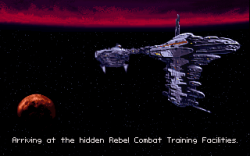
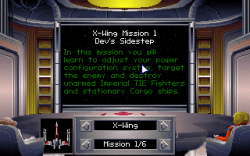
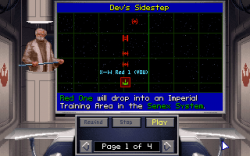
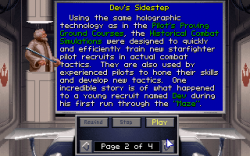
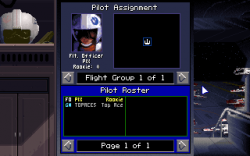
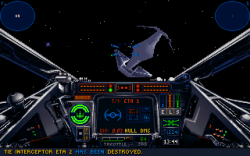
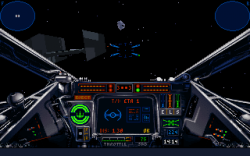
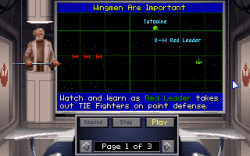

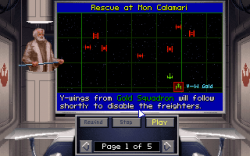
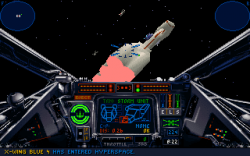
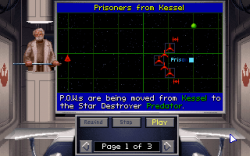
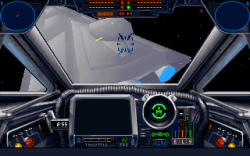
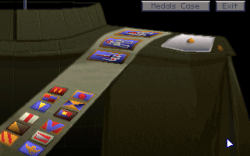
I always loved X-Wing, but TIE Fighter was the superior game by a long way. Massive improvement all round and added the compelling story elements. In fact, TIE Fighter remains my favourite game of all time.
I’d certainly like to see some of TIE fighters features in X-Wing. The problem I seem to remember was that it was extremely easy by comparison though. Going back and playing this again, I’m sure TIE Fighter is the better game individually but as an X-Wing veteran it was over all too quickly. X-Wing had the trench run also which couldn’t be a better incentive for getting to the end of a game.